Human foods can pose serious risks to dogs, turning a simple snack into a life-threatening emergency. Many everyday items in your kitchen contain toxins that dogs cannot process safely due to differences in their metabolism. This comprehensive list of what dogs can’t have will help you identify dangerous foods, understand why they’re harmful, and discover safe alternatives to keep your furry friend healthy.
Pet poisonings from household foods affect over 400,000 cases annually in the US alone, with chocolate, grapes, and xylitol among the top culprits. Whether you’re a new dog owner or a seasoned pet parent, knowing this list is essential for prevention. Always consult your vet for breed-specific advice, as small dogs, puppies, and those with health issues face higher risks.
Why Some Human Foods Are Toxic to Dogs
Dogs’ digestive systems differ significantly from humans, making certain foods poisonous even in small amounts. Compounds like theobromine in chocolate build up quickly in a dog’s body, leading to seizures or heart issues. Similarly, cyanide in fruit pits or solanine in green tomatoes disrupts oxygen flow or causes gastrointestinal distress.
Toxicity levels vary by dog size, age, and health—puppies and small breeds like Chihuahuas are especially vulnerable. Factors like pre-existing conditions, such as kidney disease, amplify dangers. Veterinary experts recommend erring on caution: if unsure, avoid sharing table scraps altogether.
Dangerous Foods Dogs Can’t Eat
Here’s a detailed breakdown of 23 common toxic foods. Each entry includes symptoms, risks, and why to steer clear, backed by reliable sources like the ASPCA and AKC.
1. Alcohol
Even tiny amounts of alcohol can devastate a dog’s smaller body, causing intoxication faster than in humans. Symptoms mirror human drunkenness: vomiting, disorientation, breathing difficulties, coma, or death. Keep beer, wine, and spirits locked away—holiday gatherings are prime times for accidents.
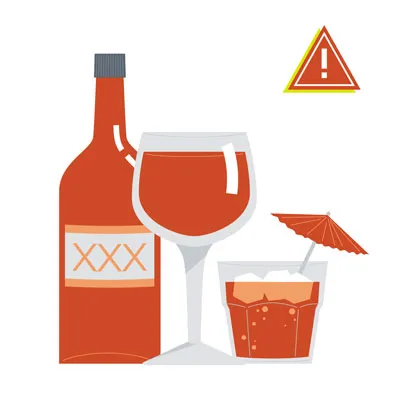 A bottle of alcohol with a warning sign for dogs
A bottle of alcohol with a warning sign for dogs
2. Apple, Apricot, Cherry, and Plum Seeds/Pits
The flesh of apples is safe in moderation, but seeds and pits release cyanide, impairing red blood cells’ oxygen transport. Large quantities lead to vomiting, rapid heartbeat, seizures, or coma. Pits also pose choking hazards and cause digestive blockages—always remove them before offering fruit.
 Apple seeds and fruit pits that are toxic to dogs
Apple seeds and fruit pits that are toxic to dogs
3. Avocado
Avocados contain persin, which has caused heart damage in some dogs, and whole pits risk intestinal obstruction. While guacamole’s extras like onions worsen it, skip this trendy food entirely. Veterinary reports note GI upset, fluid buildup, and rare fatalities.
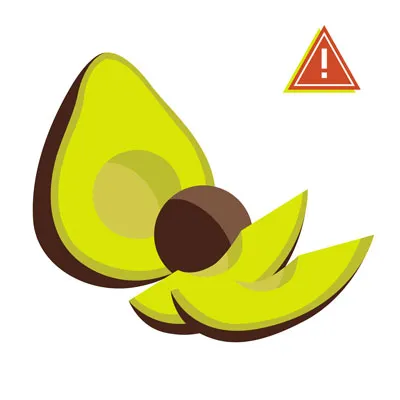 A whole avocado split open
A whole avocado split open
4. Broccoli
In large doses, isothiocyanates irritate the stomach and may cause thyroid issues. Stalks can lodge in throats, leading to choking. Opt for dog-safe veggies instead—small florets occasionally are tolerable, but safer alternatives abound.
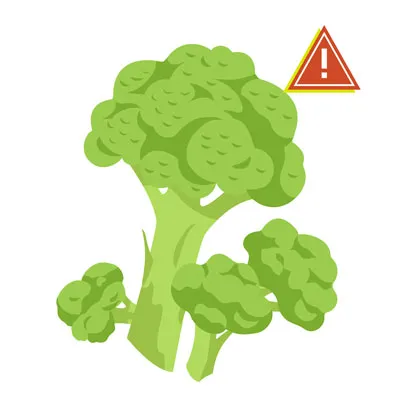 Fresh broccoli florets and stalks
Fresh broccoli florets and stalks
5. Caffeine and Coffee Grounds
Methylxanthines trigger rapid heart rates, tremors, seizures, and vomiting. Even decaf or discarded grounds pose risks. Dogs metabolize caffeine slowly, so a spilled latte could prove fatal without prompt vet care.
 Coffee grounds and a cup of coffee
Coffee grounds and a cup of coffee
6. Chicken/Turkey Skin, Ham, and Fatty Meats
High fat content sparks pancreatitis, with symptoms like severe vomiting and abdominal pain. Bones splinter, piercing intestines. Trim fat and discard scraps—lean, cooked meat without skin is better if sharing.
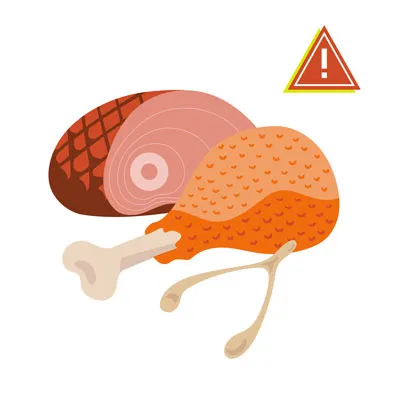 Fatty cuts of meat like ham and chicken skin
Fatty cuts of meat like ham and chicken skin
7. Chocolate
Theobromine and caffeine vary by type—dark chocolate is deadliest. Expect hyperactivity, diarrhea, heart arrhythmias, or seizures. Call poison control immediately; no safe amount exists for dogs.
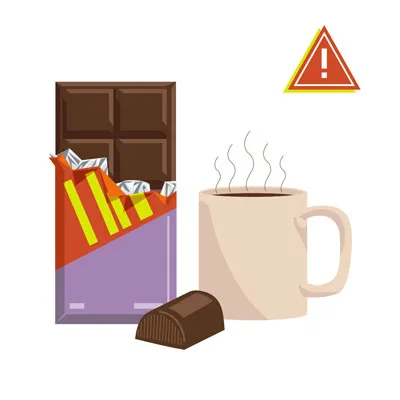 Various types of chocolate bars
Various types of chocolate bars
8. Grapes and Raisins
Tartaric acid damages kidneys, causing failure even from a few pieces. Watch for lethargy, vomiting, and reduced urine output. These are unpredictable—avoid all forms, including trail mix.
 Bunches of grapes
Bunches of grapes
9. Macadamia Nuts, Almonds, Pistachios
Macadamias cause weakness, hyperthermia, and tremors; just six nuts affect small dogs. Others risk choking or pancreatitis from fats. Spiced varieties add extra dangers—stick to dog treats.
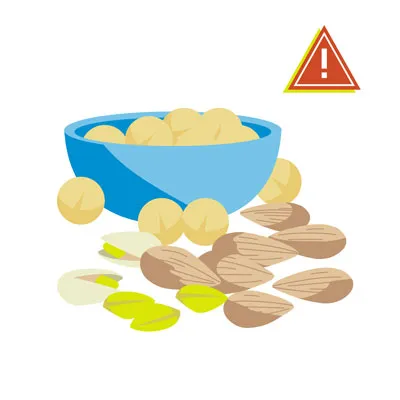 A bowl of mixed nuts including macadamias
A bowl of mixed nuts including macadamias
10. Milk and Dairy
Lactose intolerance leads to diarrhea and gas in many dogs. Ice cream’s sugar exacerbates issues. Low-lactose cheese in tiny amounts may work for some, but test tolerance first.
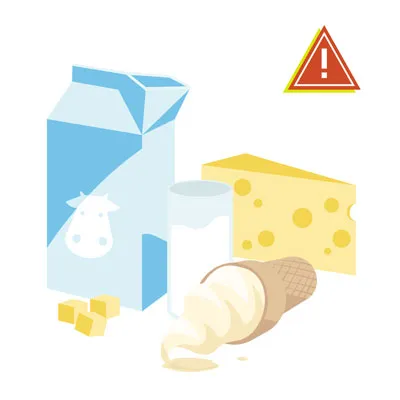 A glass of milk and dairy products
A glass of milk and dairy products
11. Mushrooms
Wild varieties contain liver toxins; even store-bought ones risk upset. Symptoms include hallucinations and organ failure. Safer fungi don’t exist—choose carrots instead.
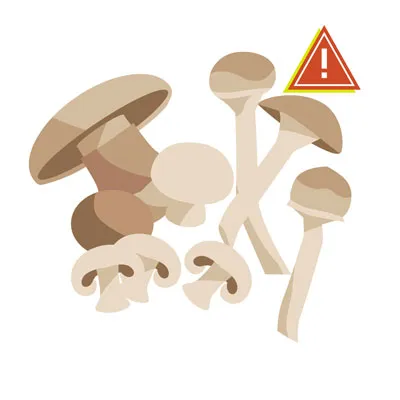 Various mushrooms on a table
Various mushrooms on a table
12. Nutmeg and Cinnamon
Myristicin in nutmeg induces hallucinations and seizures; cinnamon irritates mouths and drops blood sugar. Holiday baked goods are sneaky sources. Skip spiced treats entirely.
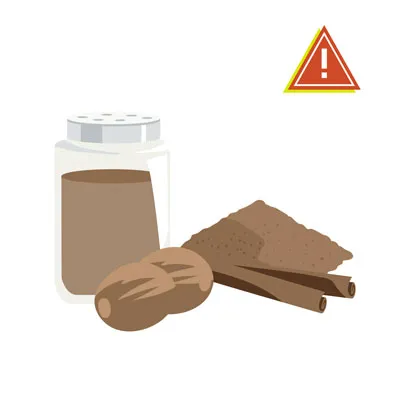 Nutmeg and cinnamon spices
Nutmeg and cinnamon spices
13. Onions, Garlic, Chives, Leeks
Alliums destroy red blood cells, causing anemia. Powders in stocks hide easily. Japanese breeds like Akitas are hypersensitive—read labels religiously.
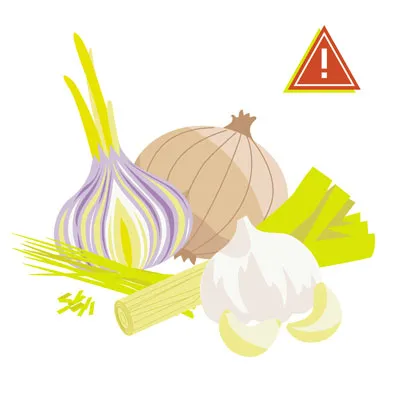 Onions, garlic, and related alliums
Onions, garlic, and related alliums
14. Salt
Excess elevates thirst, seizures, and brain swelling. Salty snacks like chips are tempting but deadly. Provide fresh water always.
 A pile of salt crystals
A pile of salt crystals
15. Spicy Food
Capsaicin burns stomachs, inducing ulcers and bloody diarrhea. Pain leads to vet bills—keep hot sauces secure.
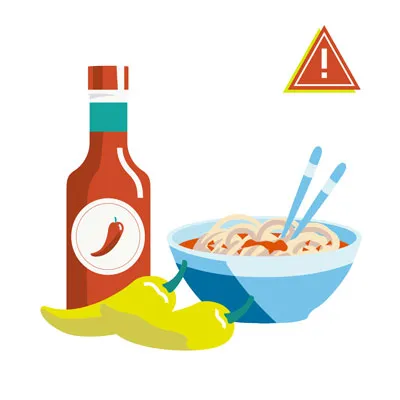 Spicy peppers and food
Spicy peppers and food
16. Sugar-Free Gum/Candy (Xylitol)
Triggers insulin surge, hypoglycemia, and liver failure. Five gum pieces kill a 65-lb dog. Check labels on all sweets.
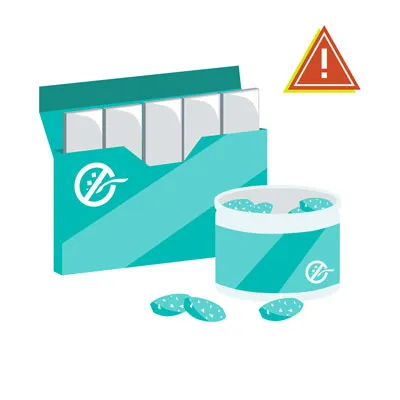 Sugar-free gum and candy
Sugar-free gum and candy
17. Tomatoes and Raw Potatoes
Solanine in greens/unripe parts causes weakness and tremors. Ripe tomatoes are safer, but avoid plants.
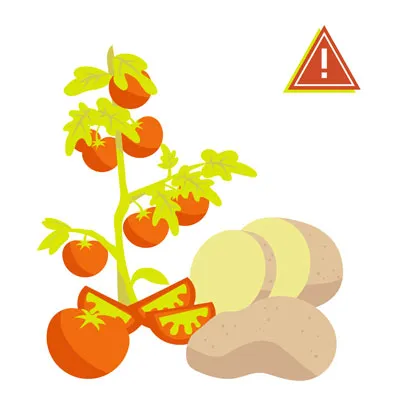 Green tomatoes and raw potatoes
Green tomatoes and raw potatoes
18. Tobacco
Nicotine provokes vomiting, seizures, and coma. Butts on walks are common hazards—act fast.
 Cigarettes and tobacco products
Cigarettes and tobacco products
19. Yeast and Raw Dough
Expands in stomachs, risking bloat/rupture; ferments to alcohol. Baking accidents demand ER visits.
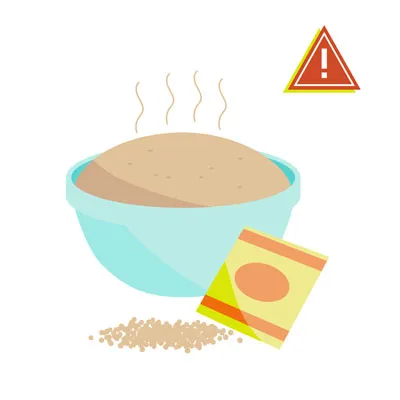 Raw dough rising
Raw dough rising
20. Raw Meat
Bacteria like Salmonella cause illness; bones splinter. Cook thoroughly for safety.
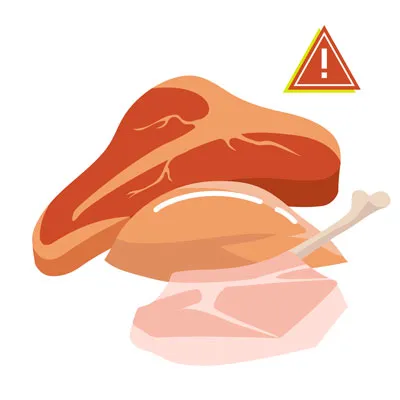 Raw meat on a cutting board
Raw meat on a cutting board
21. Rhubarb
Oxalates bind calcium, risking kidney failure and tremors. Leaves are worst—pies too.
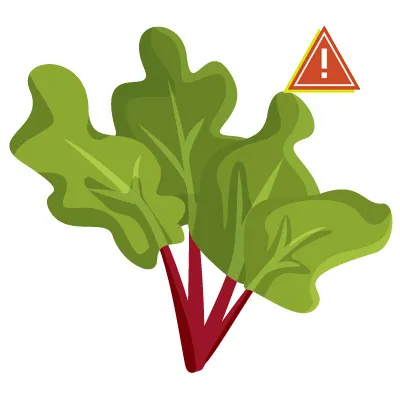 Rhubarb stalks and leaves
Rhubarb stalks and leaves
22. Star Fruit
Similar oxalates cause neurological issues. No safe serving size.
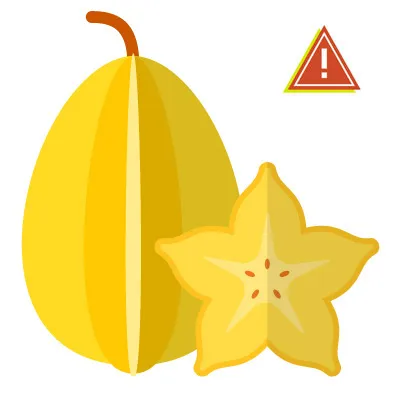 Star fruit slices
Star fruit slices
23. Flavored/Seltzer Water
Additives like salt upset electrolytes; carbonation bloats. Plain water only.
 Bottles of seltzer water
Bottles of seltzer water
Safe Human Foods Dogs Can Enjoy
Not all people food harms—many are healthy treats. For ideas on what foods are good for dogs to eat, consider these 13 options in moderation.
Apples, Oranges, Bananas
Seedless apple slices provide fiber; small orange segments or peeled bananas add vitamins. Low-calorie crunch dogs love.
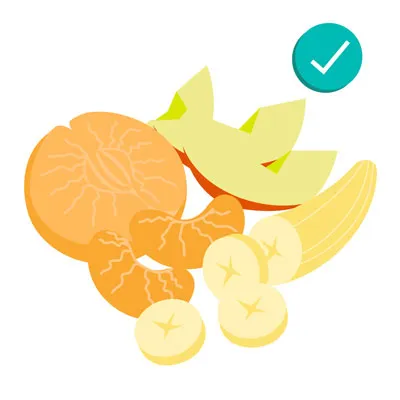 Sliced apples, oranges, and bananas
Sliced apples, oranges, and bananas
Blueberries and Blackberries
Antioxidant-packed berries boost immunity without calories.
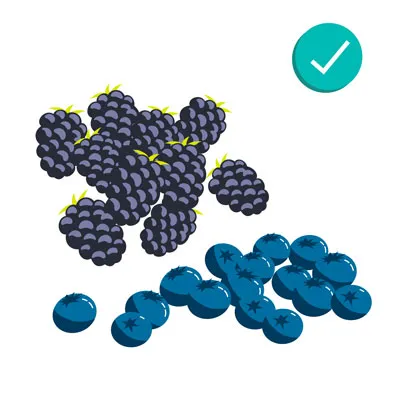 Blueberries and blackberries
Blueberries and blackberries
Melons and Tropical Fruits
Seedless watermelon hydrates; cantaloupe, mango, peaches (pitless) delight.
 Various melons and fruits
Various melons and fruits
Carrots, Cucumbers, Celery
Crunchy, low-cal veggies freshen breath and aid weight control.
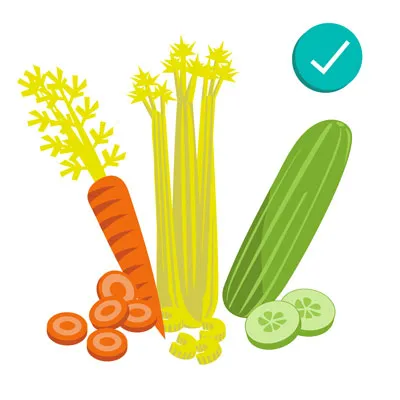 Carrots, cucumber, and celery sticks
Carrots, cucumber, and celery sticks
Cheese, Eggs, Peanuts
Low-fat cheese, cooked eggs, unsalted peanut butter offer protein. Check for allergies. See what is good for dogs to eat human food.
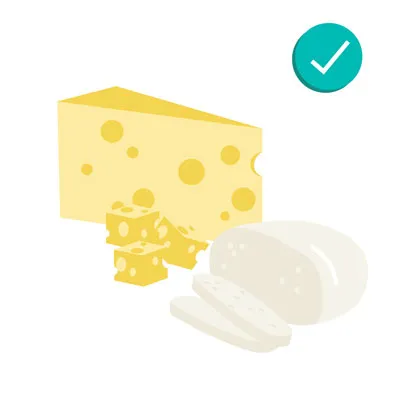 Cheese block
Cheese block Scrambled eggs
Scrambled eggs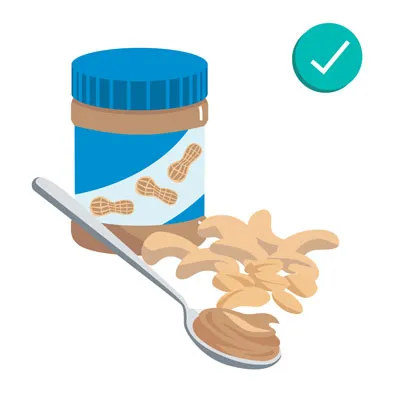 Peanuts and peanut butter
Peanuts and peanut butter
Popcorn, Coconut, Green Beans
Air-popped popcorn, coconut oil (small doses), plain green beans are winners.
 Popcorn kernels
Popcorn kernels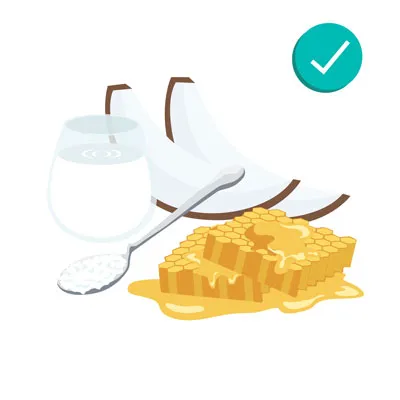 Coconut and honey
Coconut and honey Green beans
Green beans
Dogs Most at Risk from Toxic Foods
Small breeds, puppies, seniors, and those with conditions like diabetes suffer worst. Body weight dictates dose—chocolate kills a 10-lb dog faster than a Labrador.
Prevention Tips for Toxic Food Exposure
Store edibles high, ban table feeding, educate kids/guests, and holiday-proof kitchens. Vigilance prevents 90% of incidents.
What to Do If Your Dog Eats Something Toxic
Note ingestion details, call vet/poison hotline (e.g., ASPCA at 888-426-4435). Avoid inducing vomit without guidance—symptoms like bloating demand urgency.
Final Thoughts: Keep Your Dog Safe and Happy
Mastering this list of what dogs can’t have empowers you to avoid tragedies while offering safe treats. Prioritize vet-approved diets, watch for symptoms, and consider pet insurance for accidents. Your proactive care ensures a long, healthy life—share this guide and explore more on what is good for dogs to eat!
References
- WebMD: Top 10 Dog Poisons
- Colorado State University: Chocolate Toxicity
- AKC: Fruits/Vegetables for Dogs
- AKC: Alcohol Dangers
- PetMD: Apples for Dogs
- Chewy: Plums for Dogs
- Merck Vet Manual: Avocado Toxicosis
- ASPCA: People Foods to Avoid
- AKC: Human Foods Guide
- PetMD: Nuts for Dogs
- PetMD: Milk for Dogs
- PetMD: Nutmeg Safety
- VCA: Allium Toxicity
- AKC: Tomatoes for Dogs
- AKC: Potatoes for Dogs
- AKC: Cigarette Butts
- Preventive Vet: Dough Toxicity
- Pet Poison Helpline: Rhubarb
- Rover: Carbonated Water
- PetMD: Fruits for Dogs
- AKC: Green Beans
- CDC: Pet Food Safety
